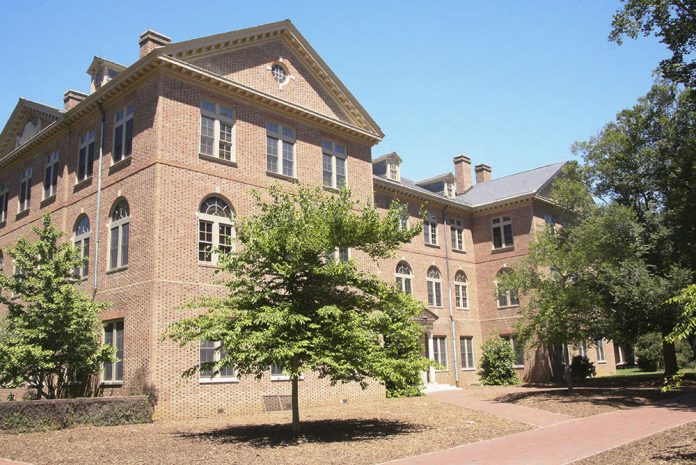Last semester, College of William and Mary history professor Frederick Corney and his students discovered a man clad in a green crewneck sweater in a film showing the 1989 collapse of the Berlin Wall. The man, whose sweater had “‘William & Mary”’ emblazoned on the front of the sweater in white lettering, became the subject of a coordinated effort to uncover his identity and determine how he came to participate in this historical moment.
From 1945 to 1991, Western Europe and Eastern Europe were separated by the Iron Curtain. The Iron Curtain represented a theoretical divide between the democratic, capitalist countries and communist regimes, but in some cases, it manifested itself in physical barriers between West and East. Its most well-known embodiment was the Berlin Wall, which split Berlin in two distinct portions for almost three decades.
While standing, the Berlin Wall seemed impregnable, and scholars doubted it would ever come down.
“Back then, there was no prospect that the wall would ever be gone,” Corney said.
Caroline Prout ’22 was the first student to speak up when she noticed the unknown man in the film; in one of the upper corners of a specific shot, he can be seen smiling and leaning back against others on top of the wall, which was in the process of being torn down to reunite East and West Germany.
Since noticing the man, Corney and his students connected with the College’s communication team, which publicized their findings and encouraged students or faculty members with potential ties to the man to contribute any pertinent information.\
“We got about six or seven responses from alumni absolutely certain that this was the person and that they knew the person,” Corney said.
“We got about six or seven responses from alumni absolutely certain that this was the person and that they knew the person,” Corney said. “So the university alumni affairs reached out to see;, turns out it was not the individual. Our leads have gone cold.”
Unsuccessful searches aside, the film discovery sparked for discussions of counterculture and its relevance among College alumni and current students.
“I know the leads have gone cold, but Corney’s stories and knowledge are still exciting,” Prout said. “He is a really good storyteller. I’ve never been to Berlin, but I have heard him talk about it and seen film from the time.”
Corney, an English native, spent four years in Germany working as a translator in Frankfurt. Through his work and professional obligations, Corney said he found himself often making trips to Berlin to visit friends and facing the wrath of Checkpoint Charlie, the famous sector of the wall between East and West Berlin where individuals could cross.
“We would go in through the East, through Checkpoint Charlie, which is always a very odd experience,” Corney said. “Back then it was the Cold War border;, you had to go through a barrier. First you would show the guards your passport and papers and then they asked questions, for no reason really, mostly just to harass travelers.”
At the end of World War II, Berlin became an oasis for the young. Striking club culture and extraordinarily vibrant pop culture flocked young people to the city and brought artists to the city’s center, creating an atmosphere of rebelliousness and counterculture that contributed to the jubilatory collapse of the Berlin Wall seen in the film.
Ryan Posthumus ’22 said that Berlin’s young population is visible in Corney’s film and is exemplified in the young, smiling faces of individuals shown tearing down the wall.
“Still remnant of the Cold War, [Berlin] is very much a young city,” Ryan Posthumus ’22 said. Posthumus and Corney agreed that Berlin’s counterculture is still present, and Posthumus expressed his interest in continuing to try discovering the man’s unknown identity.
In years past, Corney has brought students to the former site of the wall. The wall’scurtain’s former standing place is now lined with cobblestone.
“So, my experience of the fall of the wall, is really the same as [student’s] experience of the fall. I show them the same clips I saw when the wall fell.”
“When the wall came down, I of course was in the United States,” Corney said. “So, my experience of the fall of the wall, is really the same as [student’s] experience of the fall. I show them the same clips I saw when the wall fell.”
Corney and his students believe making contact with the unknown man could give them better insight into the zeitgeist of the time. However, the fact that the current leads ran dry has not deterred them in any way.
“It means nothing really, but it would be interesting if we could get in contact with this individual so he could tell us what he was doing there, what it was like,” Corney said. “He was really on the wall, literally chipping away the thing. That is an experience only a few will ever have.”

